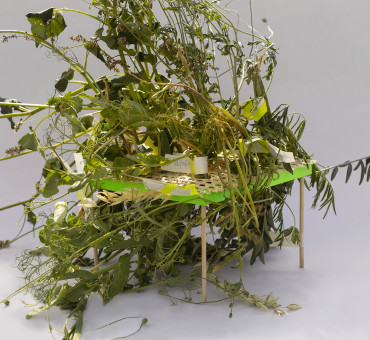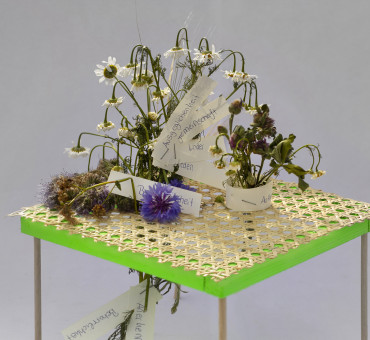
Landscape is a complex, emotionally charged term. The word alone lets pop up idyllic scenes in front of our inner eye. Whether mixed forest, cornfield, billowing grain or cornflowers along the way: Plants shape the appearance and the atmosphere of their surroundings. The landscape emerges in the eye of the viewer as the sum of his impressions.
The cultivation and processing of plants spawned a wide variety of cultures and traditions. Even if they are no longer in the economic focus today, they still shape our image of home.
Industrial land management is changing our cultural landscapes. Smallholder landscape pictures, as they are still present in memories or children's books, are increasingly being superimposed with new impressions. This form of land management provides the raw materials that are needed in the cities that continue to grow.
When we as townspeople occasionally drive into the country, passing greenhouses, biogas plants and rapeseed fields, we notice that the landscape is changing from year to year and that it is being cultivated more and more intensively. Against this background, there is controversial discussion as to how we want to deal with the competition for land between plants for the production of energy, raw materials, food and animal feed.
Modern landscapes are often perceived as a loss that has spatial and ecological deficits. Landscape must therefore be redefined and negotiated: How is cultural landscape shaped by management? How does the change of landscape change our identity? How can this be taken into account in plant research? And above all: where do we feel comfortable?
On the topic of crops and cultural landscape, we conducted two workshops in June and July 2019 at the Agrargesellschaft Pfiffelbach, which were designed by Stefan Schwabe and Jannis Hülsen.
The following video shows the results of the workshop FLURFORM and gives an insight into the experiences and thoughts of the workshop participants.
Results of the workshop participants
Within the workshops, the participants were instructed to develop short stories and objects in order to condensate new information, food for thought and ideas. Through the exchange and discussion in small groups, individual attitudes and convictions could be reflected and expanded.









The triangle represents our field of discourse. It shows excerpts of what we talked about in the workshops with the participants and what thoughts the topic of plants triggered in them.
Was der Mensch mit Pflanzen machen kann